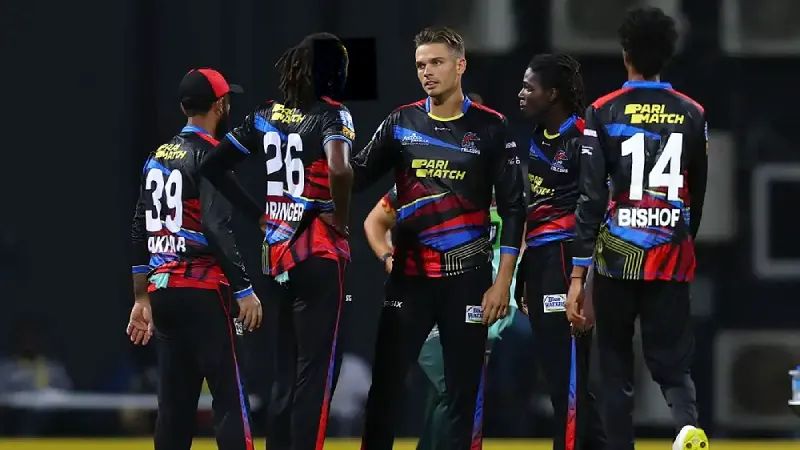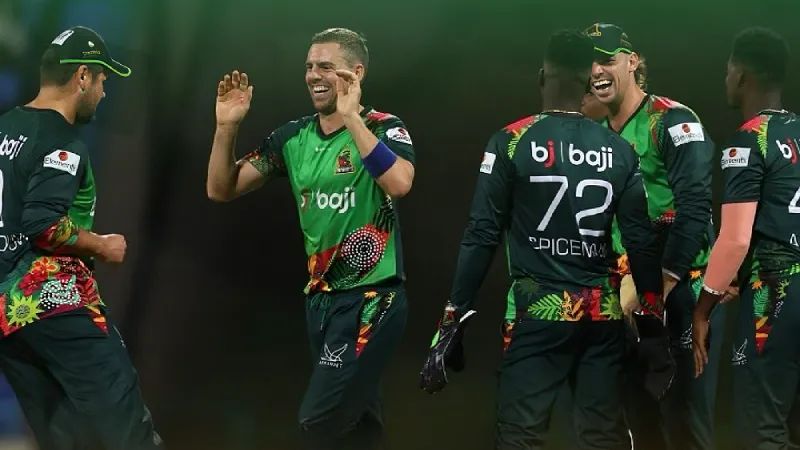

What Can We Expect from Antigua & Barbuda Falcons’ CPL 2024 Lineup?
The Caribbean Premier League (CPL) is back for its 12th season, running from August 30 to October 7, 2024, and the Antigua & Barbuda Falcons


As the IPL 2024 season unfolds, one noticeable trend has left fans and analysts scratching their heads: the alarming increase in dropped catches. With a success chance of only 77%, significantly lower than previous seasons, and a staggering 98 drops already recorded, it’s time to delve deeper into this perplexing phenomenon.
One striking observation is the disparity among teams. While Punjab boasts a decent success rate, Gujarat, on the other hand, has been plagued by numerous drops. But what could be the root cause of this inconsistency across the board?
A seasoned cricket commentator raises an intriguing point. He dismisses the notion of blaming the Impact Sub and instead suggests exploring factors such as fatigue and concentration. Indeed, amidst the electrifying atmosphere of the game, players may find themselves momentarily lapsing in focus, resulting in crucial missed opportunities on the field.
However, a more profound insight emerges from the analysis of skill development and training regimes. Tom highlights a concerning trend: the diminishing emphasis on fielding in modern cricket training. Unlike earlier times when extensive fielding sessions were integral to team practice, today’s routines often prioritize batting and bowling drills, relegating fielding to a mere afterthought.
This shift in training culture begs the question: Are players dedicating enough time to hone their fielding skills? The evidence seems to suggest otherwise. Many players opt to skip fielding practice sessions, preferring to focus on batting or bowling. Consequently, lapses in fielding performance on match day could be attributed, at least in part, to this neglect in skill development.
Moreover, the lack of measurable metrics for fielding prowess exacerbates the problem. Unlike bowling and batting statistics, which offer clear indicators of a player’s performance, fielding impact remains largely unquantified. While a bowler’s economy rate or a batsman’s strike rate is readily available, there exists no standardized measure for assessing a fielder’s contribution beyond mere catches taken.
This disparity in measurement is particularly glaring when considering the significant impact of fielding on match outcomes. As Tom aptly notes, dropped catches and leaky fielding can cost a team dearly, often resulting in lost matches. Yet, these crucial aspects of the game are often overlooked in traditional statistical analyses.
Drawing parallels with American baseball, where fielding is accorded considerable importance, Tom advocates for a paradigm shift in cricket’s approach to evaluating player performance. By incorporating fielding metrics alongside batting and bowling statistics, teams can gain a more comprehensive understanding of player contributions.
In this context, the fielding impact is a measurable statistic. Just as a bowler’s economy rate reflects their efficiency on the pitch, and a batsman’s strike rate denotes their scoring prowess, fielding impact could quantify a player’s effectiveness in preventing runs and taking catches.
Imagine a scenario where a bowler who concedes a few extra runs in the field is held accountable, just as they would be for their bowling figures. By acknowledging the holistic nature of the game and valuing fielding as an integral component of player performance, teams can make more informed decisions in team selection and strategy formulation.
Want to stay ahead in the world of cricket? Explore our comprehensive Blog Post, insightful analysis, and the latest updates on all your favorite fixtures and more at JeetBuzz News. Don’t miss out and dive into the action now!


The Caribbean Premier League (CPL) is back for its 12th season, running from August 30 to October 7, 2024, and the Antigua & Barbuda Falcons


As the Caribbean Premier League (CPL) gears up for its 12th season from August 30 to October 7, 2024, the St Kitts & Nevis Patriots


Pakistan’s decision to leave out Shaheen Afridi from the second Test against Bangladesh in Rawalpindi has sparked significant debate. As one of the team’s premier